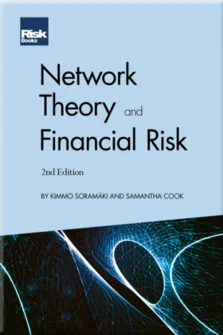Financial crime and conduct risk
Financial crime and conduct risk
Preface
Acknowledgements
An introduction to financial networks
Creating and describing networks
Identifying important nodes: Centrality metrics
Uncovering latent structure: Clustering and community detection
Finding hidden links: Projection networks
Estimating unknown links: Network reconstruction
Fast insights: Visualising networks
Financial cartography: Network layouts
Brass tacks: Complexity reduction
Financial stability and systemic risk
Design and simulation of financial market infrastructures
Monitoring and stress testing financial market infrastructures
Financial crime and conduct risk
Financial markets
References
In this chapter, we present novel methods to improve fraud detection and anti-money laundering (AML) with network theory. We first present a network-based supervised learning model to detect anomalies of fraudulent large-value payments. We will then discuss techniques to automate the manual investigation of financial crime and “following the money”.
BACKGROUND
Suppose Alice makes a new payment to Bob. A moment later, Alice makes another new payment to Chuck. Can we know if either of the two transactions is suspicious?
This example has fictional characters commonly used in discussions about security protocols to illustrate the challenge of predicting anomalous payments. This task is important, as anomalous payments may be related to cybersecurity breaches, fraud, money laundering, terrorism financing, operational errors, exchange controls, illicit transactions, sanctions and politically exposed persons (PEPs). It is especially important during the Covid-19 crisis, as the pandemic has increased cyber risks. According to the FS-ISAC (2020), in the US, cyberattacks against financial institutions increased from 5,000 per week in February 2020 to more than 200,000 per week in
Copyright Infopro Digital Limited. All rights reserved.
As outlined in our terms and conditions, https://www.infopro-digital.com/terms-and-conditions/subscriptions/ (point 2.4), printing is limited to a single copy.
If you would like to purchase additional rights please email info@risk.net
Copyright Infopro Digital Limited. All rights reserved.
You may share this content using our article tools. As outlined in our terms and conditions, https://www.infopro-digital.com/terms-and-conditions/subscriptions/ (clause 2.4), an Authorised User may only make one copy of the materials for their own personal use. You must also comply with the restrictions in clause 2.5.
If you would like to purchase additional rights please email info@risk.net











